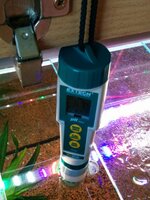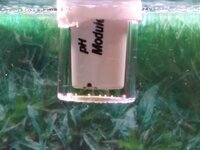Hi Folks,
I don't understand why a 1pH drop is advised when setting up a profile for injected CO2. For example, if the water KH is 4dH and the starting pH is 7.3, the CO2 concentration will be approximately 6 ppm. But, after a 1pH drop to 6.3, the CO2 concentration will be a staggering 60 ppm. A tenfold increase - no doubt because the pH scale is logarithmic (to base 10). It goes without saying that 60 ppm is well in excess of the 30 ppm limit that I believe is the CO2 limit for fish and other tank inhabitants.
JPC
I don't understand why a 1pH drop is advised when setting up a profile for injected CO2. For example, if the water KH is 4dH and the starting pH is 7.3, the CO2 concentration will be approximately 6 ppm. But, after a 1pH drop to 6.3, the CO2 concentration will be a staggering 60 ppm. A tenfold increase - no doubt because the pH scale is logarithmic (to base 10). It goes without saying that 60 ppm is well in excess of the 30 ppm limit that I believe is the CO2 limit for fish and other tank inhabitants.
JPC




